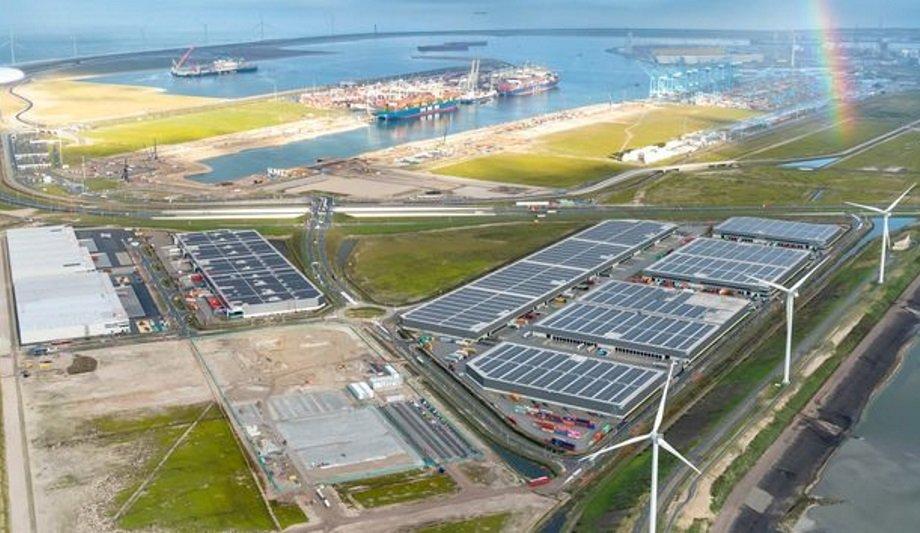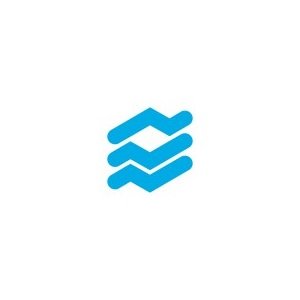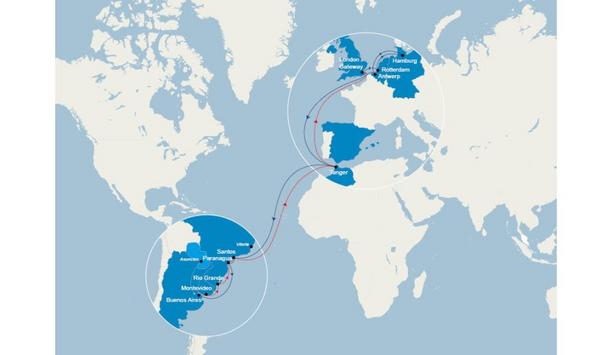The war in Ukraine led to unprecedented changes in goods flows last year. At 467.4 million tonnes, total throughput in Rotterdam was almost the same (-0.3%) as in 2021 (468.7 million tonnes) but the underlying figures show that there were major changes.
Container throughput fell by 5.5% in TEU (-9.6% in tonnes), mainly because container traffic to and from Russia came to a virtual standstill after the invasion of Ukraine. Imports of LNG, mainly from the USA, increased by 63.9% as an alternative to Russian gas. At the same time, coal imports rose by 17.9% as mainly German coal-fired power plants were used more. In line with the sanctions, companies reduced imports of Russian oil, oil products and coal, and succeeded in importing them from elsewhere.
Maintaining strategic industries
Allard Castelein, CEO of the Port of Rotterdam Authority: “2022 was an extraordinary year in many ways. The war and the sanctions led to changes in energy flows around the world and high energy prices, and therefore high inflation and the weakening of the economy. The Rotterdam business sector and all service providers were able to respond quickly and effectively. The war has also demonstrated the risks for crucial sectors of strong dependence on one country or a limited number of countries."
The war and the sanctions led to changes in energy flows around the world and high energy prices"
"In this respect, the war should work as an incentive to make Dutch and European energy and industry more resilient. That will mean accelerating the production of renewable energy and maintaining strategic industries. However, other factors are involved. They include the lack of progress on tackling nitrogen emissions, high energy prices in Europe, and the speed and scale of the efforts of the government of the United States to rack up the sustainability of its industry. They could place the Netherlands and Europe at a disadvantage. We really need to move up a gear in that respect.”
Tackling nitrogen emissions
The Port Authority has had a good 2022 in financial terms. Revenue rose by 6.9% to € 825.7 million. Operating expenses also increased: by 8.3% to € 282.2 million. The operating result before interest, depreciation and taxes (EBITDA) was also higher on balance: by 6.1% to € 543.5 million.
The net result was unchanged at € 247.2 million (2021: € 247.2 million). The Port Authority invested a total of € 257.0 million in the port (2021: € 226.3 million). The dividend proposal for the shareholders (the Municipality of Rotterdam and the Dutch State) increased by € 9.6 million to € 132.3 million (2021: € 122.7 million). Revenue consisted mainly of contract revenue (from land lease) and port dues. As a result of price changes and new contracts, contract revenue rose by € 24.9 million.
Lower call size
Income from port dues was € 27.8 million higher, despite throughput remaining virtually unchanged
Income from port dues was € 27.8 million higher, despite throughput remaining virtually unchanged. The main reasons for this were the changes in throughput as a whole (fewer containers, more bulk cargo), a price indexation of 2.5%, a lower call size (number of containers transshipped per port call) per container vessel, and fewer discounts (in part because of less transshipment). All this led to an increase in the average price per tonne.
Operating expenses were € 21.7 million higher. This includes a one-off item of € 10 million relating to assets (particularly pontoons and jetties) that were transferred to the Municipality of Rotterdam.
Investment in traditional hardware
Vivienne de Leeuw, CFO of the Port of Rotterdam Authority: “The Port Authority is an investment machine. Our healthy financial position is crucially important to maintain our capacity in the time ahead for ongoing investment in traditional hardware such as quay walls and jetties, but particularly in infrastructure for the energy transition.”
“We are also continuing to invest in digitalisation. By maintaining our position as a port with world-class infrastructure, we are ensuring that we remain an attractive location for companies to invest in the transition.”
Sustainable development goals
The Port Authority wants to accelerate the sustainability of the port and act as a smart partner
The mission of the Port Authority is to generate economic and social value. The Port Authority wants to accelerate the sustainability of the port and act as a smart partner in logistics chains.
The Port Authority is aware of its responsibility to contribute to the United Nations’ seventeen Sustainable Development Goals (SDGs) and it uses those goals to make decisions. Investments are needed in digital innovations, infrastructure, education and workforce skills to achieve both the sustainability goals and the other SDGs. In addition, the Port Authority is actively pursuing diversity and inclusiveness policies. This will ensure the recruitment of a more diverse workforce and further enhance the quality of work and decision-making, as well as the agility of the organisation.
Prevention of cybercrime
The Port of Rotterdam Authority noted a slight fall in the number of accidents in 2022: 137 accidents compared to 141 in 2021. There were two serious incidents on the water: one with the water taxi and a fatal accident when an inland vessel capsized.
To make conduct on the water safer in leisure and passenger shipping, monitoring has been intensified
To make conduct on the water safer in leisure and passenger shipping, monitoring has been intensified. The Port Authority’s Harbour Master Division has now launched a trial involving the extension of traffic control to include camera supervision. The camera network used by the Seaport Police, the Customs authorities and the Port Authority in the port and industrial area will increase from 220 to 280 cameras in the near future. This will be useful in a range of areas, including the combating of subversion and drugs-related crime. The prevention of cybercrime also continues to be a strong focus.
Lifting production cap
The dry bulk segment saw an increase of 1.7% to 80.1 million tonnes. The agribulk segment is always strongly influenced by harvest yields in different parts of the world. There were reduced imports from Ukraine last year and high energy costs also caused less processing of agribulk. High energy costs were also a major reason for the lower production in the German steel industry. As a consequence, imports of iron ore declined by 15.5%.
The throughput of coal, which in addition to being used in blast furnaces is primarily burned in power plants, rose sharply by 17.9%. Coal was cheaper than natural gas and it also reduces dependence on natural gas (in particular from Russia). In order to burn less natural gas in gas-fired power plants, the Dutch government lifted the production cap that had just been introduced for Dutch coal-fired power plants. Imports of Russian coal have been banned since August.
Industrial minerals and fertilisers
More coal was therefore imported from the USA, South Africa, Australia and Colombia
More coal was therefore imported from the USA, South Africa, Australia and Colombia. Biomass throughput rose by 13.7%. Other dry bulk fell by 14.2%. The main causes are stockpiling due to the uncertainty of supply lines, and high prices for the shipping of containers: cargo that can also be transported in bulk, such as industrial minerals and fertilisers, is therefore being transported in this way more often.
The volume of liquid bulk grew by 4.0% to 212.8 million tonnes. The 5.9% increase in crude oil was attributable to two factors. The first was higher crude oil throughput. Early in the year, this consisted of Russian crude oil, to India in particular. Late in the year, it comprised crude oil on its way to Poland and Germany, replacing oil previously delivered by pipeline from Russia.
Uncertainty of supply lines
The second cause was that the refineries in Rotterdam and the hinterland processed a lot of crude oil. Refineries in Northwest Europe switched to non-Russian oil (particularly from Iraq, Saudi Arabia, Angola, Nigeria and Norway). Because that oil comes from distant locations, the number of supertankers (very large crude carriers) increased from 27 in 2021 to 156 in 2022.
The second cause was that the refineries in Rotterdam and the hinterland processed a lot of crude oil
The 10.8% decline in the throughput of oil products was mainly due to the structural fall in the imports and re-exports of fuel oil and the sanctions targeting Russia. LNG rose by 63.9%. There was very strong demand for LNG as an alternative to the natural gas entering Europe by pipeline from Russia. 30% of the LNG came from the USA in 2022. It is noteworthy that an LNG vessel also arrived from Australia.
Disrupted transport chains
There were three reasons for the 15.3% increase in other liquid bulk. First of all, there was a shift from transport by tank container to transport by chemical tanker. In addition, there was more additional stockpiling at buyers due to logistical difficulties. In this way, in a context of disrupted transport chains, they ensured that they had enough supplies of raw materials. Finally, there was a substantial increase in renewable products, particularly bioethanol.
Container throughput fell by 5.5% in TEU and by 9.6% in tonnes. The difference between the two was due to a sharp increase in arrivals of full containers from Asia in the first nine months of the year because of high demand for consumer goods. At the same time, exports declined and so many more empty containers were shipped back.
Subsequent sanctions targeting
Transshipment cargo in particular therefore moved to other ports where capacity was still available
The container sector was still affected by disruptions in the logistics chain in 2022 due to strong demand for transport in combination with difficulties associated primarily with lockdowns (COVID-19) and capacity issues. That resulted in overcrowded terminals and distribution centres in the port and hinterland, and uncertainty about delivery times.
Transshipment cargo in particular therefore moved to other ports where capacity was still available. Cargo volume to the hinterland was higher in 2022. However, the main explanation for the decline in container throughput was the war in Ukraine and the subsequent sanctions targeting Russia. Before the war, over 8% (in TEU) of Rotterdam container traffic was related to Russia. Rotterdam had a 40% market share in this traffic.
High inflation and lower consumption
These volumes all but disappeared after March. In the fourth quarter, high inflation and lower consumption, in combination with high stocks, led to a further reduction in container throughput.
That led to additional transport in late 2020 and a dip in RoRo transport in early 2021
The consequence of all this was that the rates for container transport fell to pre-COVID levels and ships were increasingly able to sail on time by the end of the year. Roll-on/roll-off traffic (RoRo) was 13.5% higher. This figure paints a slightly rosy picture because of the end of the Brexit transition period on 1 January 2021. That led to additional transport in late 2020 and a dip in RoRo transport in early 2021.
Sustainable and efficient decisions
Other break bulk was 10.4% higher. A major factor was the increase in imports of steel and non-ferrous metals. The sharp rise in energy prices made European industrial production relatively expensive, with a subsequent increase in imports of steel and non-ferrous metals from, among other places, Asia, where demand was low due to COVID-19. In addition, high container rates meant that, as in the ‘other liquid bulk’ sector, more cargo was shipped as break bulk.
The connection of new market players led to the optimisation in 2022 of the planning tools Routescanner and Nextlogic. Routescanner provides support for sustainable and efficient decisions in container transport by sea (deep sea, short sea, RoRo), inland shipping, rail and road. It now also provides a CO2 calculator for comparing emissions on different routes. The Nextlogic pilot phase concluded at the end of December, and so this integrated planning tool for inland container shipping has now gone live.
Ammonia import terminal
Digitalisation and other forms of innovation are also playing an increasingly important role
Digitalisation and other forms of innovation are also playing an increasingly important role in the management of the port area. For example, more and more data are being collected and analysed to optimise dredging operations, and the latest quays have been fitted out with sensors that measure the forces exerted on the infrastructure.
A number of important investment decisions were made last year, the largest being those for a major biorefinery and Europe’s largest green-hydrogen plant. In addition, companies made definitive decisions to expand an ammonia import terminal, to increase battery recycling capacity, to build a hydrogen refuelling station for trucks and to proceed with a range of shore-power projects.
These investments add up to a total amount of approximately € 3 billion. The role played by the Port Authority varies from project to project and it has a particularly important role in the development of infrastructure that allows companies to operate more sustainably.
Final investment decision
To minimise delays caused by ongoing procedures relating to nitrogen emissions
To minimise delays caused by ongoing procedures relating to nitrogen emissions, a guarantee arrangement has been agreed with the Dutch State for the Porthos CO2 transport and storage project so that financial commitments can be made in advance of the final investment decision.
The pipelines for the port’s hydrogen network have now been delivered. The first TenneT substation on the Maasvlakte, where electricity from offshore wind comes to land, is now in operation. Projects and investments of this kind mean that the energy transition is underway across the entire spectrum. All the projects now in progress add up to a potential reduction in carbon emissions close to 30 million tonnes by 2030. This volume represents 40% of the national reduction target.
Achieving climate goals
A major concern is that, nearly four years after the Council of State put an end to the Dutch Nitrogen Reduction Programme (PAS), it is still unclear how the Netherlands will find a way out of the resulting impasse. Industry in Rotterdam is consistently applying the best available technology (BAT), and total nitrogen emissions have therefore fallen by 60% in the past fifteen years.
That is one reason industry in Rotterdam accounts for only 1% of nitrogen deposition
That is one reason industry in Rotterdam accounts for only 1% of nitrogen deposition in Dutch nature areas. It can therefore make only a limited contribution to the conservation and improvement of those natural areas. At the same time, industry in Rotterdam accounts for approximately 14% of Dutch carbon emissions and it plays a major role in achieving the climate goals.
Implement sustainability projects
If the industry is to implement sustainability projects, it needs some margin in terms of nitrogen emissions, for example for construction activities. In addition, a range of energy transition projects – such as the use of renewable fuels produced in the port and the use of hydrogen (imported and otherwise) – reduce nitrogen emissions outside the port.
The current geopolitical situation is a source of major uncertainty and inflation has risen sharply. As far as can be foreseen at present, the economy of the Netherlands and Europe will stagnate in 2023. Throughput volumes are therefore expected to decline slightly. In the energy transition, which is so important for the future of the port and for achieving the national climate goals, the necessary steps forward are again expected in 2023, with the speed of that process being determined in part by how vigorously the Dutch government manages to resolve the issue of nitrogen emissions.












